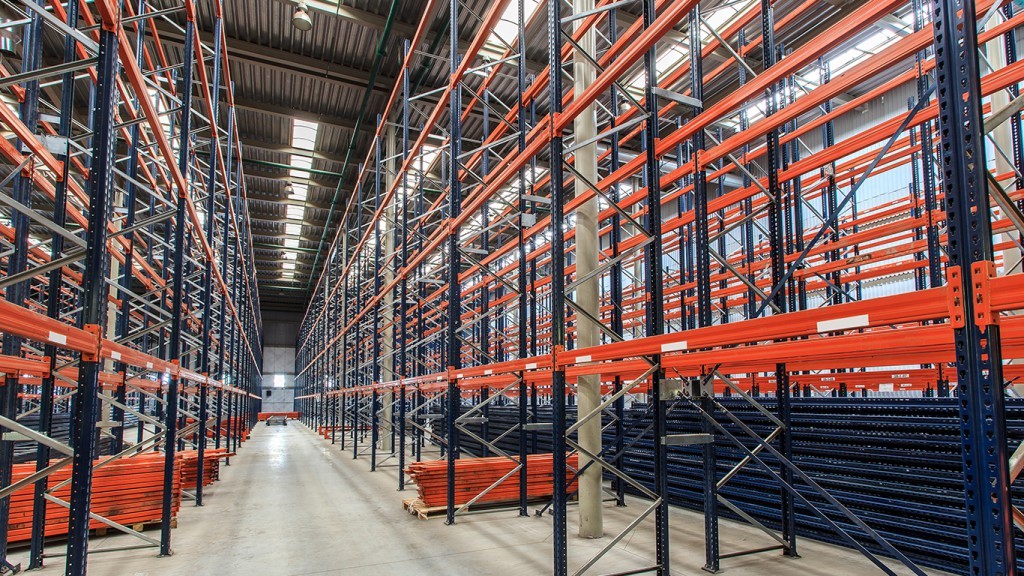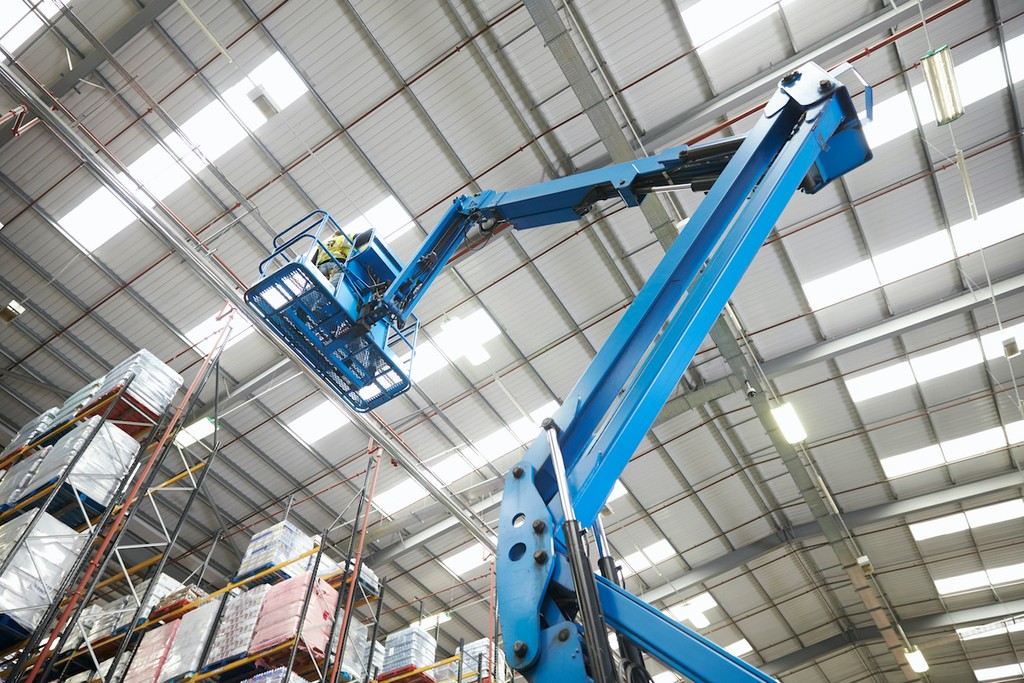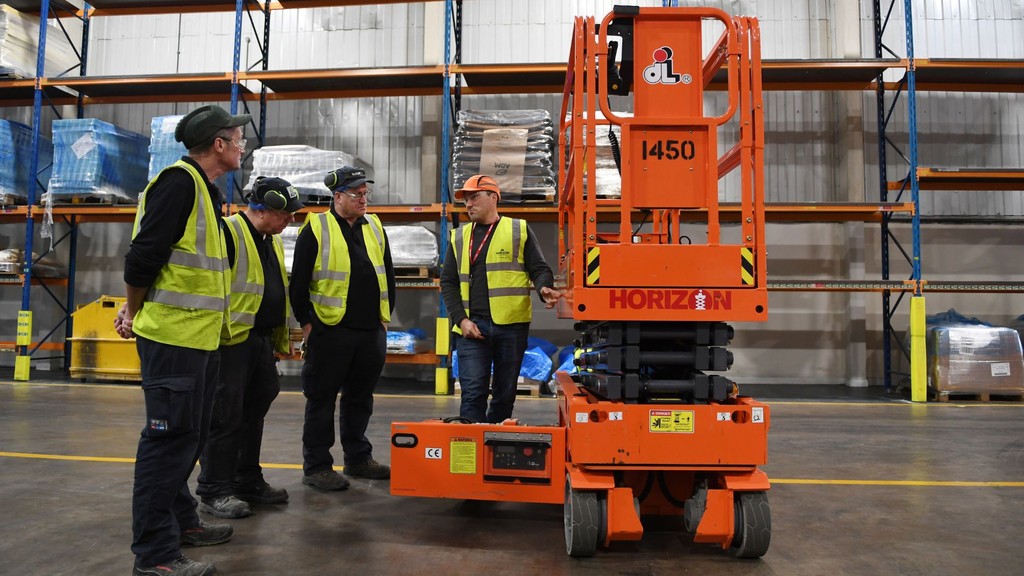Health & safety should always be your number one priority when installing a warehouse storage solution. Large fines can be incurred if your practices are found to be less than robust.
That’s why the HSE’s Guide to health & safety in the warehouse and storage industry – known by those in the industry as HSG76 – is a must-read for racking installation companies, SEIRS (Storage Equipment Installers Registration Scheme) installers, and anyone involved in delivering a warehouse storage solution.
That said, this detailed guide comprises a whopping 155 pages covering a broad range of health and safety issues to be aware of if you work in the warehouse and storage sector. So, to provide a more palatable overview, we’ve explored the key warehouse racking regulations to bear in mind!
Warehouse Racking Safety Should Always Come First
Using a mobile elevating work platform (MEWP) to install your racking system is one of the safest ways to work at height. However, there are a few basic racking safety requirements to consider before getting to work.
Basic Racking Safety Requirements
Here, you’ll find ten essential racking safety rules to swear by, to keep you and your employees safe:
- Racking should only be installed by competent people in accordance with the manufacturer’s instructions. An installation training programme is run under SEIRS (Storage Equipment Installers Registration Scheme).
- Racking should be erected on sound, level floors, capable of withstanding the point loading at each base plate. And, where necessary (e.g. where lift trucks or other mechanical handling equipment are used), racking should be securely fixed to the floor.
- Where the racking design requires it to be secured to the building, only those building members that have been ‘proved’ – by structural calculations – as able to resist the forces applied should be used. In such a case, the racking design should be compatible with the building layout.
- Double-sided runs should be connected and spaced using suitable run spacers.
- Aisles should be wide enough to ensure that mechanical and manual material handling equipment can be easily manoeuvred. Widths will depend very much on the type of equipment used (e.g. some require a 90° turn to load and offload, while some remain parallel to the aisle and have forks at 90° to the direction of travel).
- Beam connector locks should always be used to securely fix the connectors at the ends of each beam, to prevent accidental uplift of beams (e.g. by lift truck).
- Racking should have a clear unambiguous notice securely fixed to it. This should state the maximum load, together with any necessary specified load configurations.
- The limitations indicated in the maximum load notice should never be exceeded. The weight of each palletised load should be established before a decision is made to store it in the racking.
- Racking should never be altered (e.g. by welding) nor components removed without first consulting the manufacturer. Before changing the position of adjustable components on racking (as supplied), you should establish the design limitations of the new configuration and, where necessary, amend the safe working load notice.
- Use high visibility colours for key components of the racking (e.g. horizontal beams will assist truck operators to correctly position the forks and avoid damage to the racking).
Dangers of Working at Height in the Racking Installation Industry
The Health & Safety Executive (HSE) states that: “Any work at height…must be properly planned, appropriately supervised and carried out in a safe way.”
The ever-present risks of working at height can be substantially minimised with proper planning and execution of work at height tasks (for instance, considering our cherry picker checklist, for use of boom lifts).
Here are just some of the dangers that can be encountered when working at height in the racking installation industry, together with some simple steps to ensure warehouse storage installation is carried out safely.
Using the Wrong Work-at-Height Equipment
Standing on pallets on forklift trucks to work at height may be a tempting “quick fix”; but it’s also one which is highly likely to result in injury – and often serious. Forklifts are commonplace in many environments where work at height is undertaken but should only be used for the purpose for which they were intended: to transport materials and stock, never personnel.
Equally, installers should not be tempted to climb on racking units, unless the unit has been specifically designed for use as access equipment. Racking installers should choose a quality MEWP which is designed to enable quick and safe work at height from 6-60ft.
Crushing and Entrapment
Even with the correct work-at-height equipment in place, without proper care and attention, operators can be crushed or trapped against ceilings and high roof beams. It is vital to ensure that anyone operating a MEWP is wearing the appropriate safety workwear, and has undertaken relevant IPAF training to ensure they are fully aware of the hazards that exist at height and possess the knowledge and skills to use their machinery safely.
Falling Objects
Racking installers often carry items in the MEWP basket, which, if not secured properly or slip from someone’s hand, could drop from height and cause serious injury to anyone below. In addition, heavier items such as beams and girders that are lifted to height, ready for fitting, must be properly handled.
Importantly, the area directly below where a racking installer is working should be cordoned off to reduce the risk of injury from falling objects.
Inadequate Training
Installing, moving or dismantling warehouse storage should always be carried out by qualified SEIRS installers or SAICs, using quality work-at-height mobile elevating work platforms. In his blog of 10 May 2015, then-President of SEMA (Storage Equipment Manufacturers’ Association), Matt Grierson, outlined how to choose the right racking installers, stating that:
“Finding a racking design and installation company that places health and safety at the heart of their business is no longer a lottery”… It certainly isn’t in 2025!
Grierson advised clients to use SEMA approved installation companies (SAIC); or individual installers who are SEIRS trained and qualified.
How Horizon Platforms Can Help Racking Installers?
To discuss the most suitable MEWP to hire when installing racking – from conventional pallet racking to push-back racking – call the hire experts at Horizon Platforms today. In addition, Horizon has an IPAF-approved training team, who can offer advice on the correct safety training course for your racking installers.
Updated 29th April 2025



